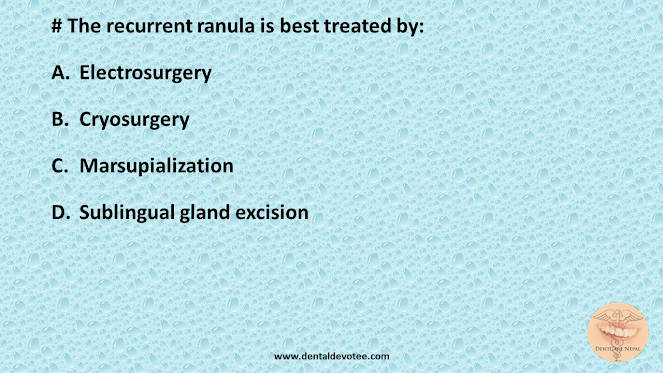# A patient comes with severe pain in an extraction socket after 3 days of extraction. Which of the following drugs would you prescribe?
A. Amoxicillin
B. Metronidazole
C. Diclofenac
D. Tramadol
The correct answer is B. Metronidazole.
Dry socket or alveolar osteitis is delayed healing but is not associated with an infection. This postoperative complication causes moderate to severe pain but is without the usual signs and symptoms of infection such as fever, swelling, and erythema. The term dry socket describes the appearance of the tooth extraction socket when the pain begins. In the usual clinical course, pain develops on the third or fourth day after removal of the tooth. Almost all dry sockets occur after the removal of lower molars.
The occurrence of a dry socket after a routine tooth extraction is rare (2% of extractions), but it is frequent after the removal of impacted mandibular third molars and other lower molars (20% of extractions in some series).
The treatment of alveolar osteitis is dictated by the single therapeutic goal of relieving the patient’s pain during the period of healing. If the patient receives no treatment, no sequela other than continued pain exists (treatment does not hasten healing). Both Tramadol and Diclofenac can be used for pain but as this is a single response type of question, B. Metronidazole should be the correct answer.
Treatment consists of irrigation of the socket and placement of an obtundent dressing. This may be supplemented with metronidazole 200–400 mg three times a day for 3 days to eradicate any secondary anaerobic infection that is present.
Ref: An Introduction to Oral and Maxillofacial Surgery David A. Mitchell, SECOND EDITION Page 137
The goal of treatment of dry socket is to relieve the patient’s pain during the delayed healing process. This is usually accomplished by irrigation of the involved socket, gentle mechanical débridement, and placement of an obtundent dressing, which usually contains eugenol. The dressing may need to be changed on a daily basis for several days and then less frequently after that. The pain syndrome usually resolves within 3 to 5 days, although it may take as long as 10 to 14 days in some patients. There is some evidence that topical antibiotics such as metronidazole may hasten resolution of the dry socket.
Ref: Peterson's 3rd edition, page 115







